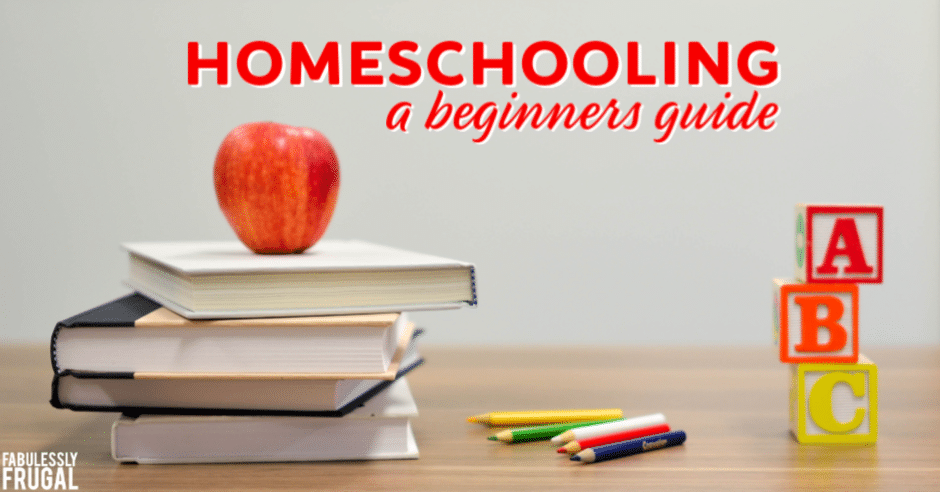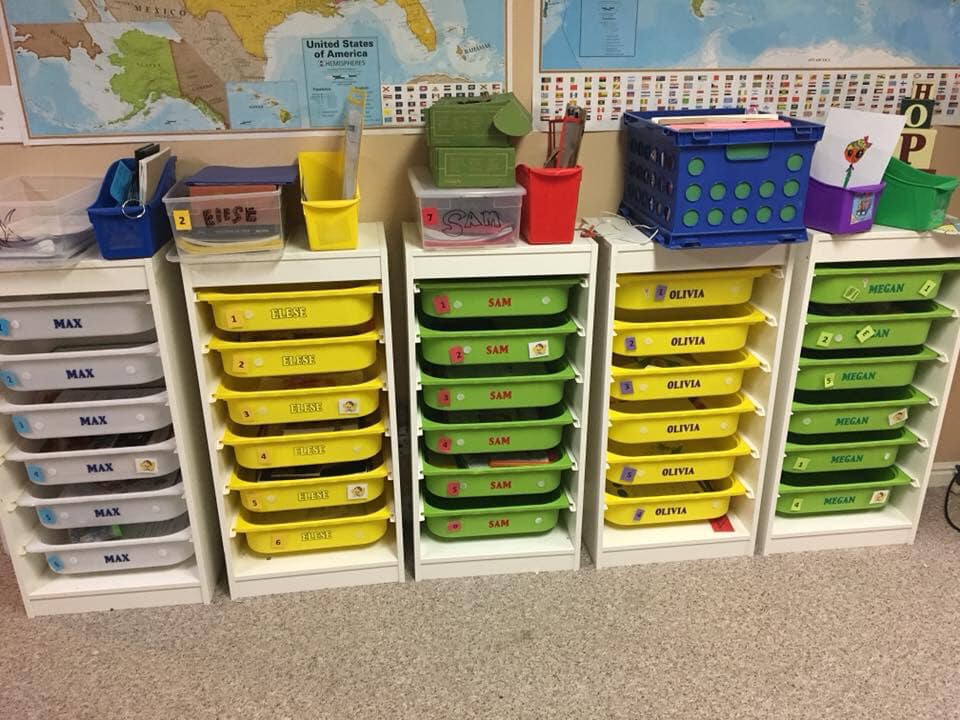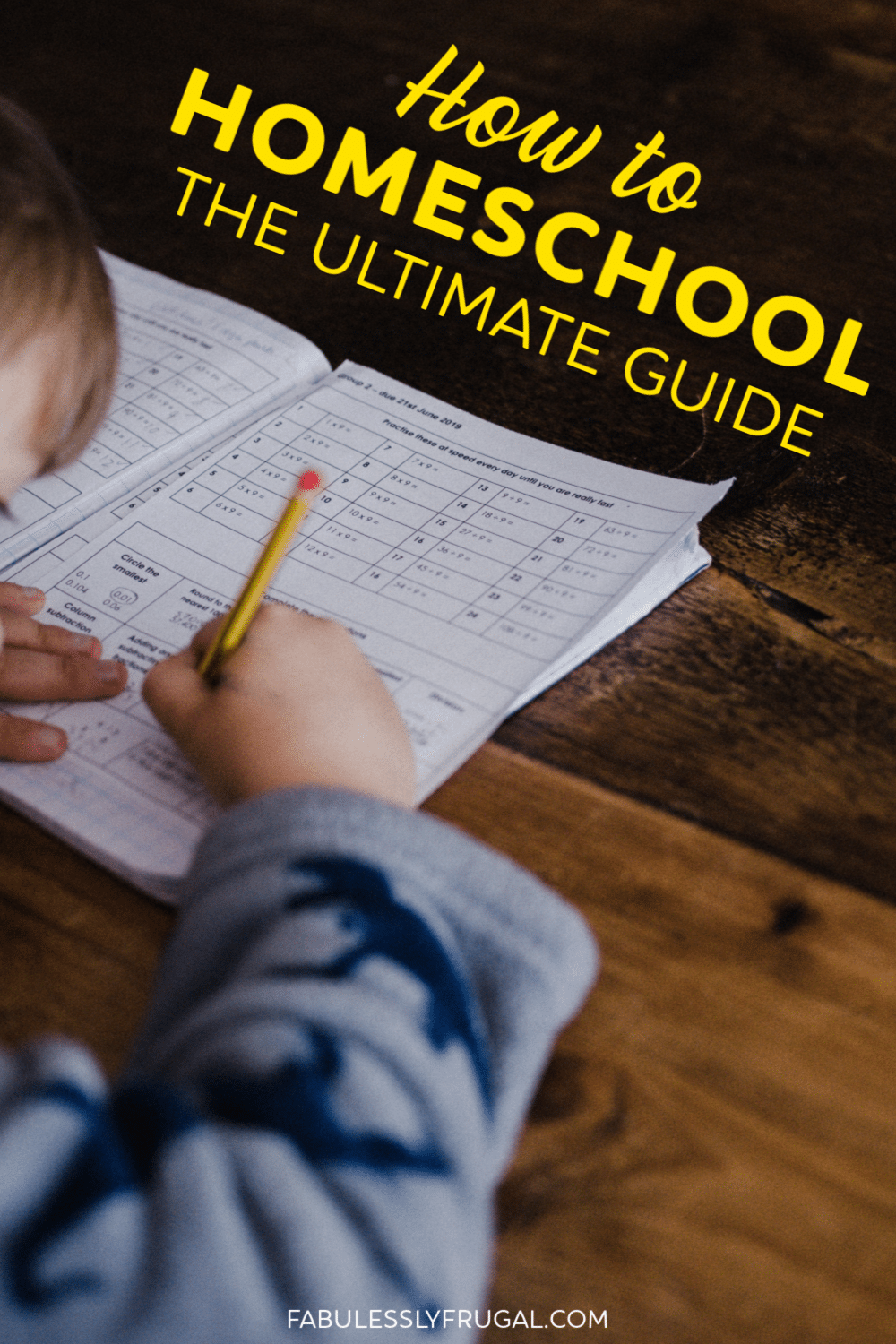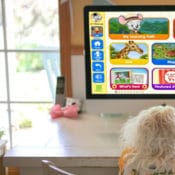How to Start Homeschooling: The Ultimate Guide
Have you seen all the fun memes homeschoolers are posting in your virtual world? Here is one of my favorites:
Chances are you don’t feel like you’ve just won a great prize. We all go through life expecting some sort of normalcy, but right now it feels like our basic freedoms have suddenly been taken away.
Today, I’d like to give you some of your freedom back.
That’s why I’ve asked my amazing cousin, Becky, who is a homeschooling pro, to EMPOWER all of us who will have our kids at home while schools close during the COVID-19 crisis. She’s written this amazing “how to start homeschooling” guide and it’s PACKED with amazing advice.
By the time you’re done reading this, you will be empowered with choices to help you sail through this time with resources and ideas you didn’t know were available to you!
Who Is Becky?
I’m a homeschooling mother of six. During my four-year homeschooling adventure, I’ve:
- Dealt with a baby who didn’t sleep through the night until she was 18 months old
- Completely changed my entire family’s diet after discovering multiple allergies
- Had another baby
- Cared for my mother with Alzheimer’s in my home
- Helped my husband start his own business
- Served in demanding church and community positions; and
- Done all the regular everyday things like wiping noses and going grocery shopping.
Life’s tough. We’ve all got our stuff, but somehow, we seem to push on. If I can do this, then so can you. I promise.
There is nothing extra special about me, I’m just a person who felt inspired to take a certain path. Right now, you are a person who has been forced to take a certain path, and being forced doesn’t mean that you too, can’t receive your own inspiration.
Top 2 Homeschooling Tips to Help You Stay on Track
Before we jump into all your exciting choices, I’m going to give you two tips that will make your freedoms more visible to your weary eyes. I’ll admit, this is nothing groundbreaking, but sometimes we just need a few simple reminders to help us stay on track.
Tip # 1 – Create a schedule:
Now that you’re going to be homeschooling and spending a lot more time at home in general, it’s important to figure out how to structure your days. Ask yourself these questions to get started:
- What is your new schedule going to look like?
- Will your household wake up at the same time, or sleep in a little?
- What things do you want done before school starts?
- What things do you want done before lunch? After lunch?
- When will you have snacks? (I promise, you will want to schedule this. Once kids are home all day long, they seem to think the only thing to do is eat).
This is what my schedule looks like (FYI – these are my ideal times; it doesn’t always happen like this):
- 9 am: Personal scripture study (the littles just listen on the iPad)
- 9:15 am: Family devotional.
- 9:30 am: 16 year old starts working on his online college courses while everyone else does “Family School” (more on this below*).
- 11:00 am: 13 year old goes off to do her independent learning (age-appropriate math, language arts and her assignments for our homeschool group) She currently uses Math Inspirations for Math, takes a speech and debate class for Language Arts, and does Science and Social Studies with our homeschool group using the Leadership Mentoring Institute (LEMI). She also likes to sew, create art, and is taking an online photography class. The littles have project time (more on this below*).
- 12:00 pm: Lunch and Recess
- 1:00 pm: Independent Learning for 6yo and 8yo, nap time for baby, and rest time for 4yo. Independent learning consists of level-appropriate workbooks and independent reading. Mom does mom stuff.
- 3:00 pm: School is over, and it is snack time. Woot Woot!
If you look around the homeschool world, everyone does it differently. Choose what works best for you!
*What’s Family School?
Family school is when you all learn together. We rotate and do one subject a day.
- For Math we study the history of math using Building Heroes Academy, play math games, or read Life of Fred or other books that help kids think mathematically.
- For Language arts we do a family read aloud. Classics are the best and open the door for some great family discussions. The Read Aloud Revival is a fantastic resource for this. Thomas Jefferson Education (TJED) also offers some great suggested reading for families, youth, adults, or books that are specific to math. We also learn (or review for my older daughter) basic grammar skills such as identifying different parts of speech. Sometimes we even do Madlibs – a fun way to teach parts of speech. We use Building heroes Academy for this as well.
- For Science we use The Family School. This curriculum relates all its lessons to principles of The Church of Jesus Christ of Latter-Day Saints. They have some free units available. Building Heroes Academy also offers secular History and Science family school classes. The Good and the Beautiful has History and Science from a non-denominational Christian View.
*What’s Project Time?
Project Time is an opportunity for my little ones (4, 6, and 8) to explore and problem solve.
Sometimes I take out an easel and they paint. Sometimes they find trash and make wonderful creations out of it. Sometimes they fight over toys. It’s really all about balance. This took a little while to make work for our homeschool.
Here are some tips to make project time successful:
- Be available to guide them to solutions by asking good questions.
- What supplies will you need?
- What are some things you should have a grown-up help with?
- How will this creation bless your life?
- How would this creation bless the lives of others?
- Why do you think that didn’t work?
- What went well?
- What could have gone better?
- What will you do differently next time?
- Have supplies easily accessible and organized.
- Realize that it will take a couple of weeks before they will start to find the solutions on their own.
There are some great companies that make project boxes. We’ve used products from the Kiwi Co. The rest of these were suggested by a friend of mine who loves herself some project boxes.
Tip #2 – Get Organized:
To start, ask yourself these questions:
- Where are your children going to learn and study? At a desk, on the couch, in their room, at the dining room table, on the front porch?
- Where will they keep their school supplies? In their backpack? On the couch? Under their bed? In the mudroom?
- Where are your pencils? Do you have pencils? Do you have a pencil sharpener?
- What obligations do your children need to meet for their schoolwork? Online classes? Reading assignments?
Here’s what I do:
We have bins set up in our school room/playroom/family room. Originally, they would have had one subject in each bin and they would work their way through each bin as the day went on. When they completed all the bins, they were done.
That doesn’t work for us right now. But we still use these bins to store their work and they use their bins to transport their work if they feel like working upstairs, at the couch, in their room, or outside.
You are likely going to be doing this temporarily (unless this thing converts you to the amazingness of homeschool). So, the most important thing for you is to come up with a plan and stick to it.
Alright, are you ready for the Choose Your Own Adventure part? Here we go!
9 Different Homeschool Curriculum Ideas
Ok, since there are many different ways to homeschool, I’m going to share 9 different paths you can take. Each path will suit different situations!
But before we get into those, here are some things I recommend doing daily, no matter which path you choose:
Mentor Moments
This is when you can ask them questions that will eventually help them start finding solutions on their own. If you start each day with 10-15 minutes with each child asking these types of questions, they will be less likely to interrupt you during the day because their brains will already be in problem-solving mode.
Here are some examples of questions you can ask:
- What is the most important thing for you to get done today? Why?
- Which of your assignments is going to cause you the most trouble today? How can I help you with that right now?
- When you run into a problem with your schoolwork today, what can you do?
- What went well with your schoolwork yesterday? Why? What do you wish had gone better?
Mentor Mondays
This is basically the same as Mentor Moments, but you use it to plan out their week. Here are some questions I like to ask here:
- What assignments do you have to finish by the end of the week?
- Which things are you most excited about doing?
- Which things do you want to get done and out of the way?
Then I help them write it out on a checklist. You can make this on your own, or just google checklists and see what you find.
Think of the children!
This is a huge adjustment for us as parents and it is for our children as well. Remember how much you love them. If it’s hard to love them in that moment then just say over and over in your mind, “I love you” until you start to remember.
Ok, now you’re ready to choose a path. Different paths work for different people, so be sure to read through them all to figure out what’s going to work best for you and your kids.
1. FOLLOW THE YELLOW BRICK ROAD
Did your child’s school provide you with required or recommended materials or online courses? Then just follow the Yellow Brick Road.
Here are some tips to make sure you end your journey with a heart, some courage, and a brain:
- Allow your child to take breaks, especially if they are doing most of their work on a computer.
- Set up a corner in your home with something they love. Rubik’s cubes? Coloring pages? Books? Music? Then encourage them to go hang out there when they start to get frustrated.
- Send them outside as often as possible. Being outside is a huge help to keep our family sane!
- You know your child. You know your schedule. Do not let the requirements and restrictions put on you keep you from doing what is best for your child and for your family. They will be ok.
- If you find that this adventure is not to your liking, then turn back and chose another one.
Do you not have enough computers to accommodate online learning for all your children?
Try these potential solutions:
- Reach out to neighbors or nearby family who may have extra to spare for a couple of weeks.
- Contact your school and see if they have some they are renting out to families in need.
- Work with teachers if your children have conflicting class times and request that they record any live courses, so your child can watch it at a different time.
Here are some tips from my brother-in-law who is a Junior High Vice-Principal:
- There will be snags with doing classes online. Be patient.
- In his area administration will be in the building, at least for Monday. If you have questions, don’t be afraid to call the school or email teachers.
- Does your family rely on free or reduced lunch? Call your school and see if they will be offering any sort of lunch program.
- Last and most important, use this time to give lots of love to your kids.
2. TIME CRUNCH!
When I was a kid, I would always use Choose Your Own Adventure books for my book reports because I hated to read. This allowed me to “read” a 200-page book without having to read all 200 pages. I was super clever.
So, whether you are working from home during this time or if you are just like 10-year-old me and super lazy, then these resources and tips are for you.
- Easy Peasy (Free): If you need a free resource where your child can do all the subjects they are learning at school, at their grade level, then this is a great place to start.
- Kahn Academy (Free): This is a free online math resource. It uses common core, so it’s taught in the same way they have been learning at school.
- Prodigy (Free): This is a fun interactive game that teaches math skills. Your child must answer math questions to move onto each new level. You can also purchase a subscription for more resources.
- The Good and the Beautiful Language arts levels 1-5 (free): If your children are between 4th and 7th grade and you want to add some non-denominational Christian principles in with their learning then check out The Good and the Beautiful’s free pdfs. Their levels do not match up with grade level. Level 1 is more like a second-grade level and so forth. They have information on their website to help guide you to the correct level for your child. Do not be discouraged if your child tests to a lower level than you expected. This is an academically challenging curriculum. Levels 4 and 5 are self-led while the other levels would require some parental involvement.
- Outschool: Outschool offers online learning. Their pricing varies depending on the course your child chooses to take. I have never used this resource, but I know others who have and have loved it.
- Workbooks: You can search your child’s grade and workbook on Amazon and you will have plenty to choose from. I’ve only used the workbooks from Costco, but they aren’t “in season” this time of year, so Amazon is your best bet. For some recommendations, read this post: 10 Best Workbooks for Kids (Pre-K to Grade 8).
Don’t forget to apply Mentor Moments and Mentor Mondays so your work (or laziness) will have fewer interruptions.
3. ACADEMICALLY DRIVEN
This is the path if your number one concern is making sure your kids don’t fall behind during this time away from school.
- Do everything you can to keep your child at grade level (Google “first-grade requirements” + your state).
- Once you know what is considered grade level in your area you can use the following resources to help your child stay at or exceed grade level:
- Kahn Academy (Free): This is a free online math resource.
- Teacher’s Pay Teachers (Free-$$): This is a great resource that also supports teachers. Some things are free, other’s aren’t.
- The Good and the Beautiful is a non-denominational Christian curriculum. Their Language arts levels 1-5 are offered as free downloads. They offer plenty of other subjects as well. They sell downloads and printed materials.
4. GO WITH THE FLOW
This is the path if you want to just sit back and enjoy this time with your kids by creating family memories. When you spend time reading to your kids, they start to read to each other and it is beautiful.
- Do lots of project time (see my schedule above for details).
- Have fun going outside observing nature (collect rocks and do some rock painting)
- Read lots of books.
- Read-Aloud Revival
- The Good and the Beautiful Book List
- TJED Booklists
- Use Kindle, order books online, or visit your library if you dare and if it’s open.
- www.stevenheumann.com – just kidding, these aren’t for kids, but hey, if Mom and Dad like to read sci-fi then these will help you escape reality and keep you entertained.
- Ask your kids what they want to learn to do. Facilitate that learning.
- YouTube
- Phone a Friend
- Choose something you are passionate about or have always wanted to learn. Learn it with your kids.
- Check out Math Inspirations. She has lots of fun math game resources and uses the discovery method. I love watching my kids discover math and seeing how each of their minds work so differently.
5. THE FUN MOM
This is for the mom who naturally wants to just play with her kids. I’m not that mom.
- Play.
- Wrestle.
- Do a puzzle.
- Do science experiments.
- Make crafts.
- Just be you.
- Pretend you are on vacation.
- Have them play Prodigy.
6. THE RESEARCHER
- Read up on different homeschool philosophies.
- TJED (Thomas Jefferson Education)
- Charlotte Mason
- Educating the Heart
- Montessori
- Unschooling
- Decide which one most appeals to you and then go for it.
- Tell your researcher to take a nice deep breath, make a choice and move on. For now, this is temporary. If you like having your kids around 100% of the time and decide to stick with it, you can take the summer to do more research. For now, choose something, try it and then decide if you like it.
7. JUST GET ME OUTTA HERE
If you want to just put your head down and plow through this, then this is the path for you.
- Email your child’s teacher and ask what they would like them to be focused on. Then make a daily checklist for your child to mark off as they go through the day.
- Watch a lot of Magic School Bus
- Find fun documentaries on a streaming service.
- I mentioned Prodigy above. Go this route for math if you want your kids to have fun while also working independently.
- Have them listen to books on audible.
- Have them read books on their own.
8. I’M DROWNING IN KIDS!
This is for anyone who has kids at all different stages and the thought of teaching them all at once seems impossible.
- If your older child(ren) can work independently, let them. Check in on them. Have Mentor Moments but allow them to succeed and fail on their own. They will be ok.
- Set up a family school format using Building Heroes Academy, The Family School (if you are open to a curriculum based on the teachings of the Church of Jesus Christ of Latter-Day Saints)
- Put away some of the little ones’ toys and have them just make a special appearance during school time.
- Coloring pages for littles that have to do with what you are learning about. Little ones will want to be part of school.
- Take lots of breaks.
- Buy some chocolate and lock yourself in your room with it.
- Wake up an hour earlier each day and:
- Meditate
- Read something you want to read (another shameless plug for www.stevenheumann.com, you can also try these clean romance novels)
- Exercise (try this quick at-home workout routine)
- Watch the sunrise
- Write in your journal
9. HELPING MY KIDS FIND THEIR WAY
If you are wanting to use this time to help your children who may be struggling in school or with their friends, this is the path for you.
- Does your child have a hard time sharing?
- Play with toys together. Let them lead. Mentor them through their play.
- Does your child get super upset if they don’t win a game?
- Play lots and lots of board games and don’t let them win.
- Play Monopoly or Life if they need help with managing money.
- Does your child surround themselves with bad influences?
- Use your family’s core book to remind them of their values. A core book is a book that you use to help teach your values. For some people, this is the Bible or other scripture, for others, it could be a classic novel that they love.
- Does your child seem aimless?
- Study life mission with the Mission Driven Mom and take what you learned and help your child find their life mission.
- Help them set and achieve small goals that inspire them, then slowly build up to larger goals.
- Are you concerned about Sex Education within your school system?
- Teach them about sex biologically and along with your personal value system. One great resource for this is The Good and the Beautiful Maturation unit. This is taught from a non-denominational Christian view. I have not used this resource, yet, but I plan to next year and I’ve heard great things about it.
Final Thoughts
I hope these homeschooling tips and techniques have been helpful and that you found an adventure that will fit your family’s needs.
During this time of stress and uncertainty, I’d like you to take a moment to look back and remember that once upon a time you had this great dream about what you wanted your child to grow up and be, and how you wanted to interact with them, and all the wonderful things you wanted to teach them.
And then life happened. You weren’t sure how to pay the mortgage. You took on extra responsibilities at work. Your elderly parent needed extra help. Life got in the way of the thing that you longed to have.
The universe is forcing us to refocus our efforts. Let’s all try to see this as a blessing and an opportunity to solidify our families by spending more time learning together. Good luck!
Posts to Check Out Next:
- 44 Fun Indoor Activities for Kids Stuck at Home
- 30 Best Free Online Educational Resources for Kids
- 10 Best Workbooks for Kids (Pre-K to Grade 8)
- How to Manage a Household Like a Pro (in 3 Steps)
- How to Get Kids to Do Chores (the Motivating Way)
Report a Problem
Please select the problem you are facing with this deal:
- Price Increased
- Price Decreased
- No longer available
- Expired
- Link doesn't work
- Suggestion
- Compliment
- Other
Add more details:
Thank you for your feedback. We really appreciate it.
Enter your email address if you would like to receive a follow up.
Please Try Again

























